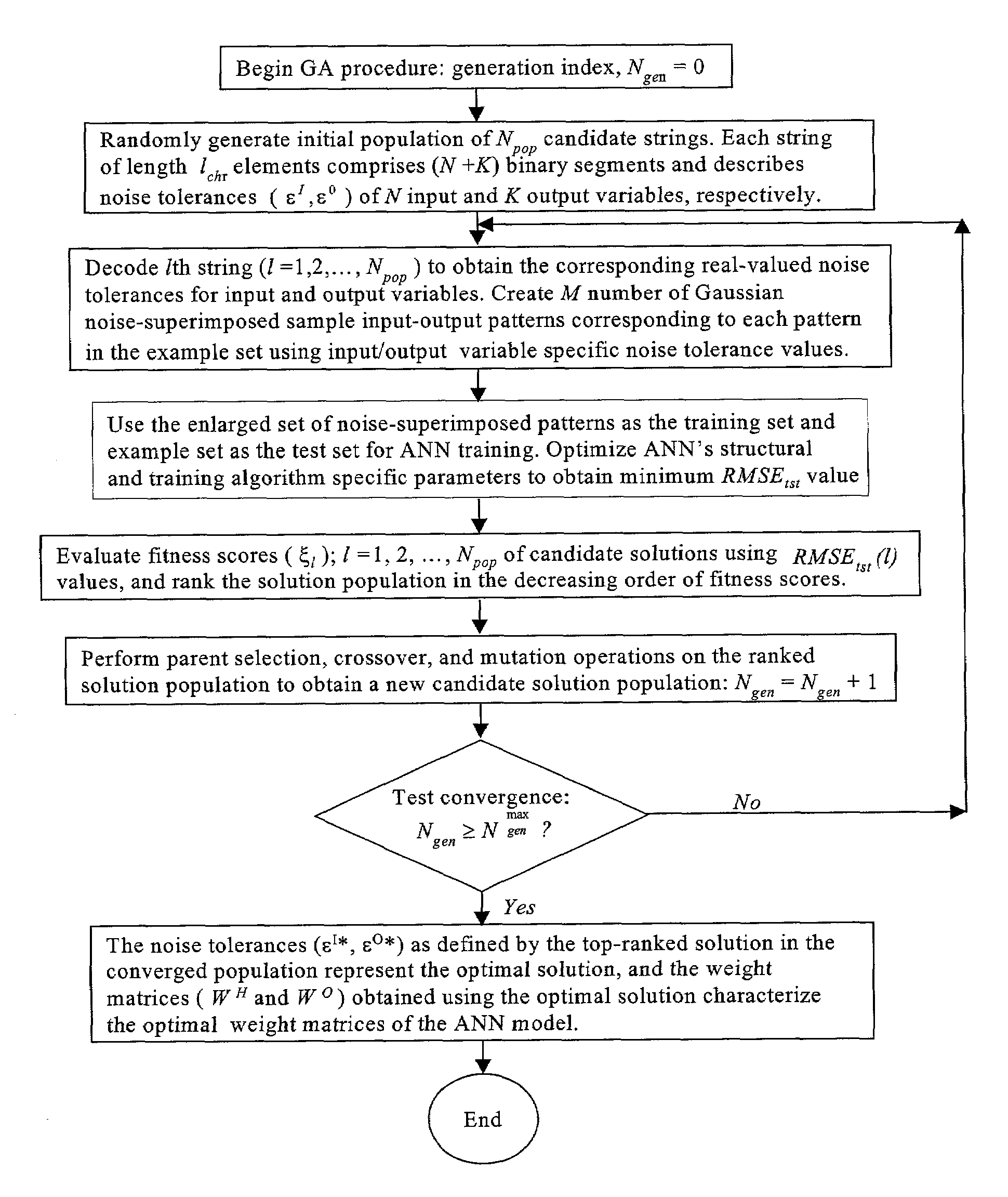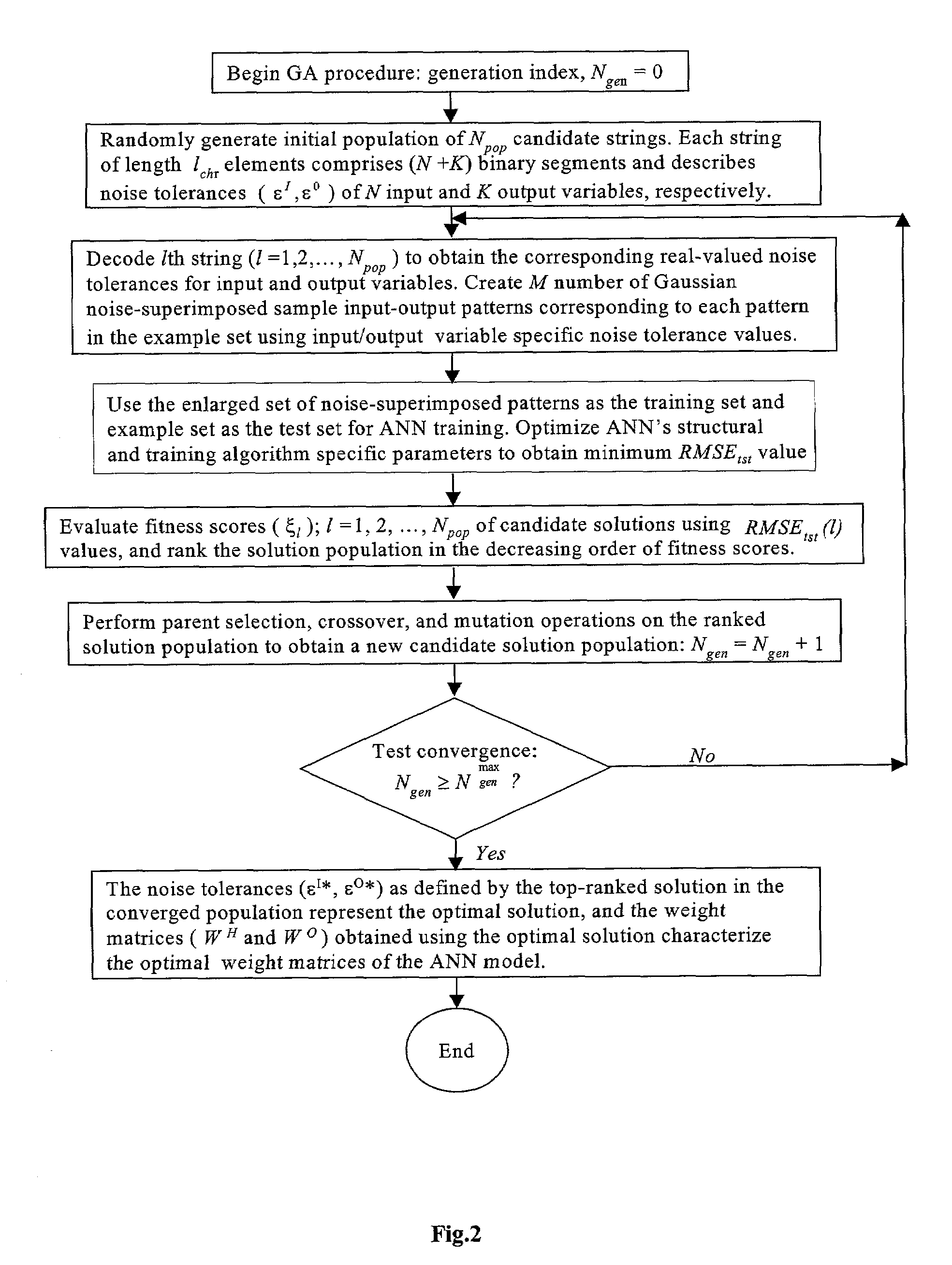Performance of artificial neural network models in the presence of instrumental noise and measurement errors
a technology of artificial neural network and measurement error, applied in the field of performance of artificial neural network models in the can solve the problems of the threshold limit of the accuracy of model prediction and the generalization performance exhibited by the model, the average relationship captured, and the imminent presence of instrumental noise and/or measurement errors. achieve the optimal level of noise, improve the and improve the effect of prediction accuracy and generalization performan
- Summary
- Abstract
- Description
- Claims
- Application Information
AI Technical Summary
Benefits of technology
Problems solved by technology
Method used
Image
Examples
example 1
[0058]Data used in the first illustration of the invented methodology, is taken from a running industrial polymerization process. The process data consist of nine inputs and one output; inputs describe process conditions and the output represents a polymer quality parameter. A total of 28 input-output data patterns (example set) were available for ANN modeling. These data contained instrumental noise and measurement errors. Using MLP as the ANN paradigm, first several network models were developed to predict the polymer quality parameter using various training algorithms, such as the EBP, conjugate gradient, Quickprop and RPROP. While developing the MLP-based models, the effects of various network structural parameters, such as the number of hidden layers, the number of nodes in each hidden layer, learning rate, momentum coefficient, etc., were rigorously studied. Also, the effects of different initializations of the network weights, and the size of the training and test sets, were ...
example 2
[0061]In this example, a process involving jacketed non-isothermal continuous stirred tank reactor (CSTR) wherein two first order reactions in series, A→B→C, take place, is considered. The process data comprises steady-state values of six CSTR operating variables (inputs) and the single output therein describes the corresponding steady-state value of a product quality variable. A total of 50 input-output data patterns (example set) were available for the ANN-based modeling; the data contained instrumental noise and / or measurement errors. An MLP model was first developed by employing the example set as the training data for predicting the value of the output variable, for which various training algorithms, such as the EBP, conjugate gradient, Quickprop and RPROP, were utilized. While developing the MLP network models, the effects of various structural parameters, for example, the number of hidden layers, the number of nodes in each hidden layer, learning rate, momentum coefficient, e...
PUM
 Login to View More
Login to View More Abstract
Description
Claims
Application Information
 Login to View More
Login to View More - R&D
- Intellectual Property
- Life Sciences
- Materials
- Tech Scout
- Unparalleled Data Quality
- Higher Quality Content
- 60% Fewer Hallucinations
Browse by: Latest US Patents, China's latest patents, Technical Efficacy Thesaurus, Application Domain, Technology Topic, Popular Technical Reports.
© 2025 PatSnap. All rights reserved.Legal|Privacy policy|Modern Slavery Act Transparency Statement|Sitemap|About US| Contact US: help@patsnap.com



